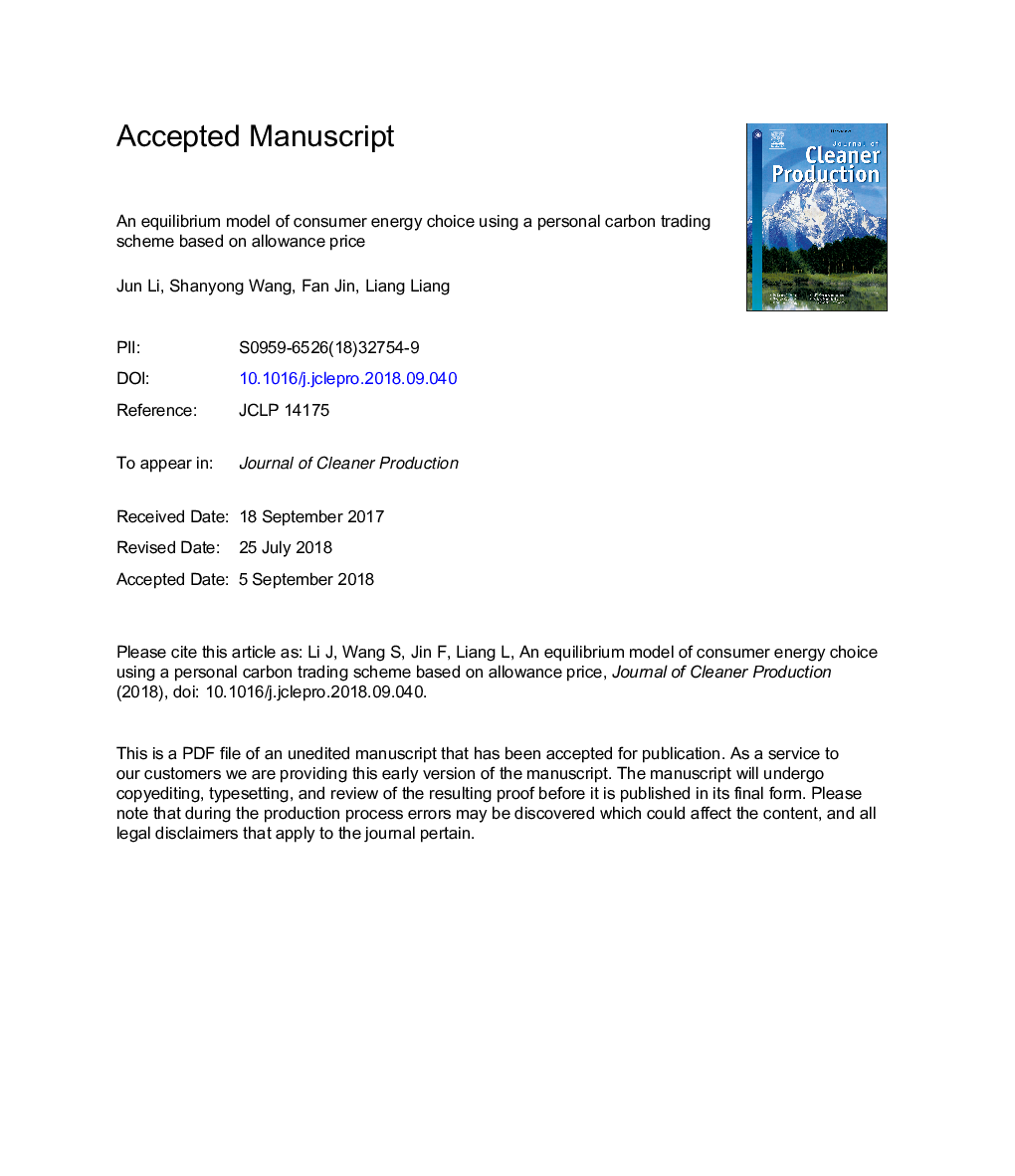| Article ID | Journal | Published Year | Pages | File Type |
|---|---|---|---|---|
| 10149322 | Journal of Cleaner Production | 2018 | 33 Pages |
Abstract
Changes in consumer behavior due to a personal carbon trading (PCT) scheme are theoretically attractive, yet untested in practice. In this paper, simulations on the basis of an equilibrium model are used to examine the effects of carbon allowance prices on energy use choice under a particular PCT scheme. It is shown that the equilibrium price of allowances would emerge under the PCT scheme considered here. Further analyses indicate that the quantity of energy consumption under PCT is a nonlinear function of the allowance price, with a sharp kink at the point of equilibrium. When the allowance price is below the equilibrium price, consumers would prefer higher-carbon energy. In contrast, when the allowance price is above the equilibrium price, consumers would choose lower-carbon energy. However, when the allowance price equals the equilibrium value, consumers would purchase lower-carbon energy and higher-carbon energy simultaneously. Furthermore, it is shown that the initial allowance allocation could also affect energy use choice. On the basis of these results, one of the main implications is that the allowance price should exceed the breakeven price to stimulate consumers to switch to green energy and progressively live a low-carbon lifestyle.
Related Topics
Physical Sciences and Engineering
Energy
Renewable Energy, Sustainability and the Environment
Authors
Jun Li, Shanyong Wang, Jin Fan, Liang Liang,
